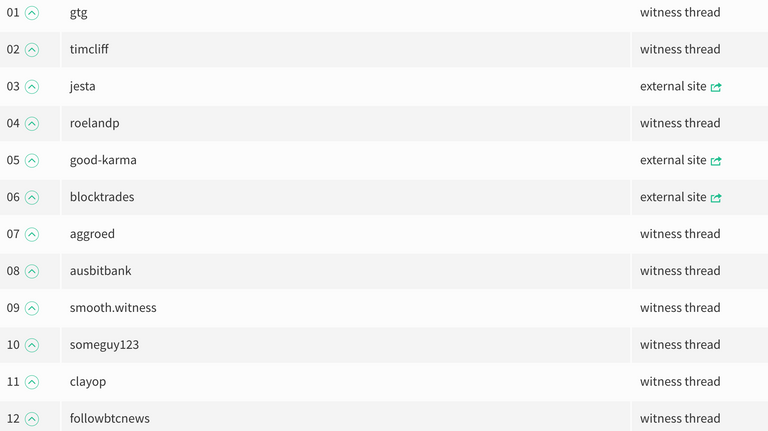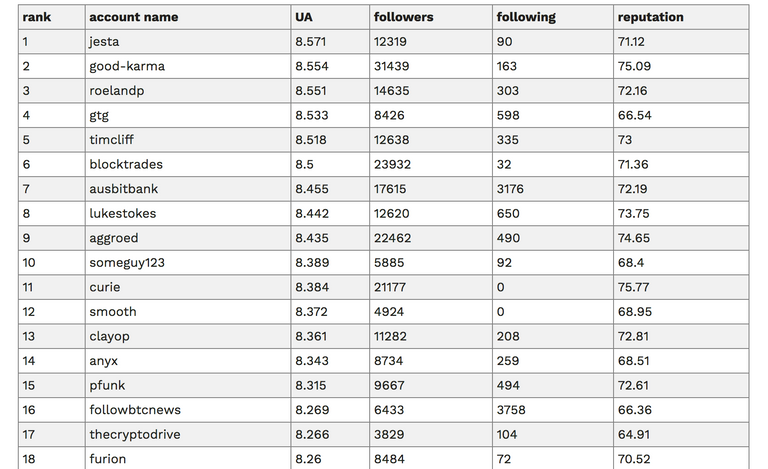Just recently @steem-ua has introduced the new User Authority designed to replace the steemit reputation score.
As long as we trust stake and post payouts as a measure of quality there is really nothing wrong with reputation. But since the appearance of bidbots this becomes more and more problematic. Your earnings can be repeatedly cycled through bidbots, generating massive reputation scores without any real downsides.
An alternative was needed that is not linked to post payouts. But there is one central problem. How do you define a measure for trust that is not stake in a decentralised way? To this question there are no easy answers. The basic blockchain protocol of steem is dpos, so the native measure for trust is and will always be stake, hardcoded at the fundamental layer.
User Authority is the first try to replace reputation with something that is more meaningful and harder to exploit. The basic idea is to create a graph tracking who follows whom. Following somebody is essentially an expression of trust, trust that the followed account produces or shares content that you find interesting.
Now just looking at follower numbers is again a problematic system that can be easily gambled by creating fake accounts that follow you. This alone does not solve the problem. We are almost back to the start, where we need some intrinsic measure of trust.
User Authority uses the miners as a trusted authority as these are maintaining the blockchain. If the miners cannot be trusted nobody can. Then these miners propagate their trust through the network of followers. And what comes out is user authority. If a miner follows you that is good. If somebody being followed by a miner follows you …. and so on. Over a few links everybody is connected to the miners and will gain some Authority. The more people follow you the more UA you will have, but being followed by mindless bots does not help you much as miners and other people will likely not follow them.
This system is significantly harder to game. You might propose to vote for miners for them to follow you … but that requires much more work. Maybe instead focus that effort on gaining real followers???
But there are certain flaws in the system. First by using miners as sources of trust we are back to stake based protocols because the miners are elected based on stake. This in itself is not a big problem, it is just something one should know to understand what UA means.

What is a much bigger flaw is that miners often operate from business accounts. If you look at the top miners, a lot of them follow few people, or even none at all. A lot of them are not persons but related to projects such as blocktrades. These accounts dont follow others because they trust their content but for many other reasons and therefore spread their User Authority in a very biased way.
Also it means that naturally all miners have huge UserAuthority scores, even though they often are not the most interesting channels. In fact when looking at the top user authority accounts I first though I was looking at the witness voting page instead.
I completely understand that alternatives to reputation are needed. And user authority certainly is a great project improving current situation a lot. But in my opinion miners play a too central role in UA. The following top 1000 US scores minus the top 100 miners probably quite accurately reflect the most interesting steem accounts. But I would not say that miners should end up on top because there is often a huge political struggle in maintaining one of these spots.
I am not really sure how to avoid this problem without centralisation. Ideas could be to propagate reputation through the follower graph? Propagate stake? Hard to tell if that would end up as a better measure?
In any case UA is the best we currently have, but it is important to understand its flaws to properly judge what that value means. I am exited to see the future applications build on this new metric.
